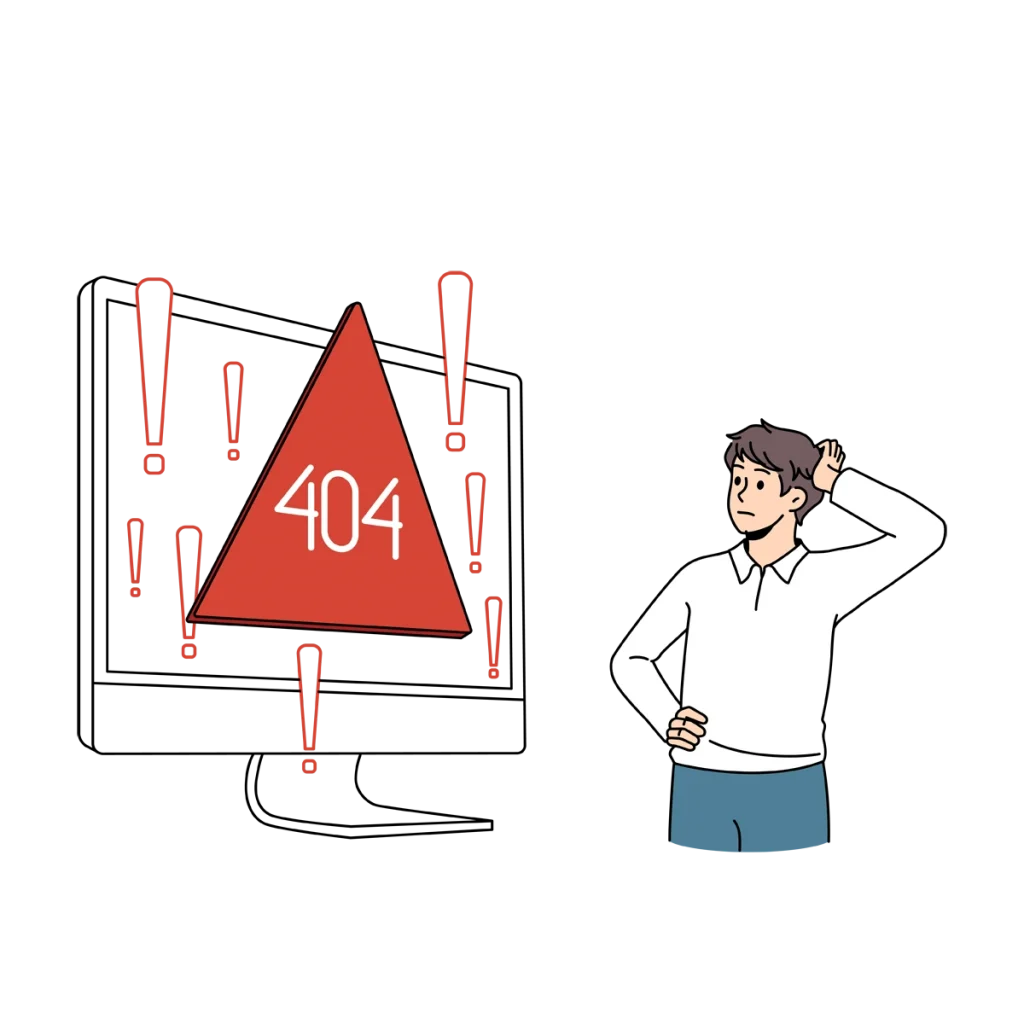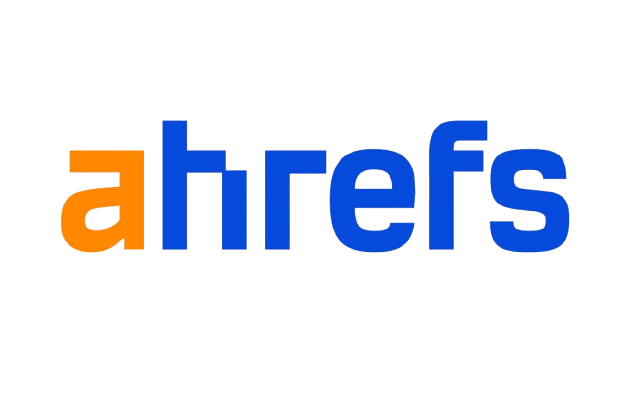- September 19, 2024
- by admin
- Uncategorized
- 3 Comments
When it comes to improving your website’s visibility, keyword research is the foundation of a successful SEO strategy. You’ve likely heard of using primary keywords, but did you know that LSI (Latent Semantic Indexing) keywords and semantic keywords are just as important for ranking in search results? These keywords not only help search engines better understand your content but also ensure that your content meets the user’s search intent.
By leveraging these strategies, you can avoid keyword stuffing while keeping your content relevant and natural. Mastering how to use semantic keywords effectively can help your site reach more users, improve engagement, and boost your search rankings.
In this guide, we’ll dive into the best practices for on-page SEO and how using the right mix of LSI and semantic keywords can drive more traffic to your site. Whether you’re an SEO beginner or looking to refine your skills, this will provide you with actionable tips to elevate your strategy. Let’s get started!
What Are LSI and Semantic Keywords?
LSI (Latent Semantic Indexing) keywords are terms that are contextually related to your primary keyword, but they are not just simple synonyms. They help search engines understand the overall theme of your content, ensuring that it aligns with what users are actually searching for. While many people believe that LSI keywords are just different ways to say the same thing, they actually serve a much bigger role: providing context.
For example, if the primary keyword is “Apple,” LSI keywords would include terms like “iPhone,” “MacBook,” or “Apple Store.” These help clarify that you’re referring to the technology brand, not the fruit. This way, search engines know that your content is about the tech company, which improves the chances of ranking for relevant searches.
On the other hand, semantic keywords focus on user intent and help refine the meaning of your content. These keywords are closely related to the main topic but dig deeper into what a user might be looking for. They answer the “why” or “how” behind a search. If the main keyword is “Apple,” semantic keywords might include phrases like “best iPhone apps” or “Apple customer service.” These keywords help search engines connect the dots and understand the relevance of your content to the user’s query.
By using both LSI and semantic keywords, you’re helping search engines better understand the full context of your page. This approach not only boosts your rankings but also ensures your content aligns with what your audience is searching for.
Why Are LSI and Semantic Keywords Crucial for On-Page SEO?
LSI and semantic keywords are essential components of on-page SEO because they allow your content to be more closely aligned with the user’s search intent. By naturally incorporating related terms, search engines can better understand the meaning and context behind your content, ensuring it matches more diverse and relevant queries.
This results in your page being more visible in search results without the need for repetitive keywords, which can harm the readability and overall quality of your content. Additionally, using these keywords enhances the user experience, keeping visitors on your page longer because your content answers their questions more effectively. This leads to better engagement signals, like lower bounce rates, which further boost your rankings over time.
Increase Content Relevance
LSI and semantic keywords play a key role in helping search engines understand the full context of your content. By using these keywords naturally, you give search engines more relevant signals about the topic you’re covering, which makes your content more likely to appear in user searches.
Instead of relying solely on a primary keyword, LSI keywords help clarify the intent behind a user’s query, making your content more relevant to a wider range of searches. For example, if you’re writing about “Apple,” including terms like “iPhone” or “MacBook” helps search engines understand that the content is about the tech company, not the fruit. This improves your chances of ranking for related queries, leading to better visibility.
Avoid Keyword Stuffing
One of the biggest advantages of using LSI keywords is the ability to avoid keyword stuffing. In the past, websites would use the same keyword repeatedly in an attempt to rank higher, but search engines have since evolved and now penalize this practice. LSI keywords allow you to use variations of a keyword naturally, which makes the content sound more organic and less forced. This ensures that the text remains readable and useful to visitors, which not only helps SEO but also improves the user experience.
Improve User Experience
When content is optimized with both LSI and semantic keywords, it aligns better with the user’s search intent. This means that the people who land on your page are more likely to find what they’re looking for, leading to longer time spent on your site and lower bounce rates. When users feel that the content meets their needs, they are more engaged, which signals to search engines that your page is valuable. This, in turn, improves your rankings over time. The key to a successful on-page SEO strategy is to keep users engaged by creating content that directly answers their questions and provides the information they’re looking for.
How to Find LSI and Semantic Keywords for On-Page Optimization

Once you’ve gathered a solid list of LSI and semantic keywords using the tools and methods mentioned, it’s important to integrate them naturally into your content. This means strategically placing these keywords in areas like your headings, subheadings, meta descriptions, and throughout the body text, without forcing them in. The goal is to ensure that the content flows smoothly and provides value to the reader, rather than simply stuffing keywords for the sake of SEO.
By doing this, you improve the overall readability and relevance of your content, making it more likely to rank higher and keep visitors engaged. Additionally, as search engines continue to prioritize user experience and content relevance, using these keywords in a way that feels natural and useful will give you a competitive edge.
Use SEO Tools
Finding LSI and semantic keywords can be made simple with the right SEO tools. Platforms like LSIGraph, SEMrush, and Ahrefs are designed to help you discover related terms that complement your primary keyword. These tools provide suggestions based on what real users are searching for, allowing you to create content that aligns with their intent. Additionally, using Google’s ‘People Also Ask’ feature can uncover questions related to your topic, giving you a list of keywords that reflect common user queries. By integrating these tools into your keyword research process, you’ll be able to create a list of relevant terms to include naturally in your content, improving both search visibility and user engagement.
Research Competitors
Analyzing your competitors’ content can reveal valuable insights into which LSI and semantic keywords are helping their pages rank higher. Tools like SEMrush allow you to input a competitor’s URL and see which keywords they are ranking for, including related terms and variations. This helps you identify gaps in your own content and spot opportunities to target keywords that your competitors are successfully using. By researching the keyword strategy of top-performing competitors, you can fine-tune your approach to maximize your SEO performance.
Leverage Google’s Autocomplete
One of the simplest yet most effective ways to find semantic keywords is by using Google’s Autocomplete feature. When you start typing a search query into Google, it automatically suggests related searches. These suggestions are based on what users frequently search for, making them a great source for discovering keywords that are in high demand. For instance, if you type “Apple,” Google might suggest terms like “Apple iPhone,” “Apple customer service,” or “Apple MacBook,” all of which are valuable semantic keywords. By incorporating these suggestions into your content, you can better match what users are actually searching for, which increases the likelihood of your content appearing in relevant searches.
Best Practices for Implementing LSI and Semantic Keywords
By following these best practices, you’ll not only improve your on-page SEO but also create content that is more engaging and relevant for users. The natural integration of LSI and semantic keywords helps search engines understand the broader context of your content, ensuring it matches a variety of related search queries.
Additionally, by optimizing meta tags and structuring your content with keyword clusters, you’re signaling both to search engines and users that your content is comprehensive and valuable. This approach improves search visibility, boosts click-through rates, and ultimately enhances the overall user experience, making your content more competitive in the ever-evolving SEO landscape.
Natural Integration
The key to implementing LSI and semantic keywords effectively is ensuring they are integrated naturally throughout your content. Instead of forcing keywords into every sentence, focus on placing them in high-impact areas like your headings, meta descriptions, alt text, and within the body content. This approach makes your content sound organic and human-friendly, rather than robotic.
For example, if you’re writing about “Apple products,” including LSI keywords like “iPhone,” “MacBook,” or “Apple Watch” in the headings and subheadings will give your content more relevance without overloading it. Similarly, use these keywords in alt text for images and in meta descriptions to boost search engine visibility while maintaining a natural flow.
Content Structuring
Properly structuring your content is essential for improving both user experience and SEO. By strategically placing semantic keywords in your content, you create keyword clusters that signal topical relevance to search engines. A keyword cluster is a group of related terms that revolve around your primary keyword.
For example, if your main topic is “Apple devices,” you can include semantic keywords like “best iPhone apps” or “Apple MacBook features” to form a well-rounded cluster. This helps search engines understand that your content covers the topic comprehensively, increasing your chances of ranking higher for related searches. Additionally, it improves the readability and engagement of your content, as users can easily find information that matches their search intent.
Optimizing Meta Tags
Your title tags and meta descriptions play a crucial role in attracting clicks from search engine results. To optimize these for better CTR (Click-Through Rates), include your LSI and semantic keywords in a way that makes your page more appealing to users. For example, instead of simply using a title like “Apple Products,” a more optimized title might be “Discover the Latest Apple Products: iPhone, MacBook, and More.” By adding LSI keywords into your meta tags, you’re giving search engines more signals about the page’s content, which can help improve your rankings and visibility in relevant searches. This also makes your listing more engaging to users, increasing the likelihood of them clicking on your link.
Common Mistakes to Avoid When Using LSI and Semantic Keywords

After understanding the best practices for implementing LSI and semantic keywords, it’s equally important to be aware of common mistakes that can negatively impact your on-page SEO efforts.
Overusing LSI Keywords
One of the most common errors is overloading content with LSI keywords. While LSI keywords are meant to provide context and support your primary keyword, using too many can make your content feel spammy and forced. This not only disrupts the readability of your content but also raises red flags with search engines, which may view your page as an attempt to manipulate rankings. The key is to use LSI keywords naturally, ensuring they fit smoothly within the content and add value, rather than just trying to cram them in. Proper balance is crucial for effective on-page SEO services.
Ignoring User Intent
Another mistake is focusing solely on keyword variation without considering user intent. LSI keywords should reflect what the user is actually searching for, which means aligning them with the searcher’s purpose. If your content is filled with keywords but fails to address the user’s query, it won’t perform well. For example, if a user searches for “Apple product reviews,” and your page mentions “iPhone” or “MacBook” without providing the reviews they expect, you’re missing the mark. Search engines prioritize content relevance, so ensuring your keywords match user intent is essential for ranking success.
Not Updating Old Content
SEO is an ongoing process, and failing to update old content with new LSI and semantic keywords is a missed opportunity. As search trends evolve, so do the keywords that users search for. Revisiting your older blog posts or pages to incorporate more current and relevant keywords ensures your content stays fresh and competitive. Regularly refreshing content with new on-page SEO strategies not only helps maintain or improve rankings but also enhances user experience by providing up-to-date information.
Case Study: How LSI and Semantic Keywords Increased Traffic
In one of our recent projects, we worked with a mid-sized e-commerce website that was struggling to increase its organic traffic, despite having a solid content base and good products. After performing an audit, Emergentify’s team found that the site was relying too heavily on a few core keywords, leading to issues with keyword stuffing and missed opportunities for ranking with LSI and semantic keywords.
The Strategy
We revamped their on-page SEO strategy by incorporating a variety of LSI and semantic keywords throughout their product pages, blog posts, and meta descriptions. For example, instead of using the primary keyword “women’s shoes” repeatedly, we included LSI keywords such as “ladies footwear,” “casual sneakers for women,” and “comfortable heels.” This created a more natural flow in the content, making it both user-friendly and more comprehensive for search engines to understand. We also ensured that each page targeted user intent, focusing on what potential customers were searching for—such as “best running shoes for women” and “affordable women’s shoes online.”
The Results
After three months, the results were undeniable. The website’s organic traffic increased by 45%, and their rankings improved for more long-tail keywords related to women’s shoes. We noticed a significant drop in bounce rate, as visitors were finding the content more relevant and engaging. Time-on-page increased by 30%, and click-through rates (CTR) improved after optimizing the title tags and meta descriptions with relevant semantic keywords. In terms of numbers, we saw a 20% boost in ranking positions across multiple search terms. These changes not only attracted more visitors but also improved the overall user experience, keeping them on the site longer and reducing the likelihood of bounces.
Lessons Learned
This case highlighted the power of combining LSI and semantic keywords to create a more relevant, user-focused SEO strategy. By understanding the broader context of user searches and implementing the right keywords, we were able to make the content more discoverable while improving engagement metrics. The lesson here is simple: when you align your on-page SEO services with both search engines’ understanding and user intent, the traffic follows naturally.
Tools and Resources to Help You Get Started
To effectively integrate LSI and semantic keywords into your on-page SEO services, having the right tools can make all the difference. Here are some of the most helpful tools to assist with your keyword research and optimization efforts:
LSIGraph

LSIGraph is specifically designed to help you discover LSI keywords. It generates a list of related terms that complement your primary keyword, helping you avoid keyword stuffing while still improving your content’s relevance. Simply enter your main keyword, and LSIGraph will provide a set of contextually related keywords to enhance your content naturally. We often recommend this tool to our clients when they are starting their keyword optimization journey.
SurferSEO

SurferSEO is a powerful tool for improving on-page SEO. It offers an in-depth analysis of your content compared to top-ranking pages, suggesting how to improve keyword density and providing relevant semantic keywords to incorporate. SurferSEO helps you understand how competitors are using keywords and provides recommendations to enhance your own content’s structure and performance. This tool is especially helpful for businesses looking to refine their content and improve ranking positions.
Google Keyword Planner

Google Keyword Planner remains one of the most trusted tools for keyword research. Although primarily designed for PPC (Pay-Per-Click) campaigns, it’s highly useful for generating a broad range of semantic keywords. It offers search volume data, competition level, and suggested related terms, making it an essential tool for anyone looking to improve their on-page content. We regularly use Google Keyword Planner to ensure our content aligns with current search trends and user intent.
Ahrefs

Ahrefs is another excellent tool for both keyword research and competitor analysis. It allows you to see which LSI keywords your competitors are using and how they are ranking for them. With Ahrefs, you can get a clear view of keyword difficulty, search volume, and related terms. It’s one of our go-to tools when we need a comprehensive analysis of a keyword’s performance across search engines.
How to Integrate These Tools Into Your SEO Strategy
Start with Google Keyword Planner: Use this tool to find high-volume, intent-related primary and semantic keywords. Once you have your core list, move on to more specific tools for deeper insights.
Use LSIGraph for Contextual Keywords: Once you have your primary keywords, input them into LSIGraph to get a list of related terms. These keywords will help you create a more comprehensive topic and avoid overusing your primary keyword.
Optimize Content with SurferSEO: Compare your content to competitors using SurferSEO. This tool will provide recommendations on how to structure your article, adjust keyword density, and include more relevant terms.
Refine with Ahrefs: Use Ahrefs to analyze your competitors’ top-ranking pages and see which LSI and semantic keywords are helping them succeed. Then, adjust your content to include similar keywords while ensuring your content provides better value to users.
By using these tools strategically, you can enhance your on-page SEO services and ensure your content ranks higher while staying relevant to user queries. These tools not only simplify the process of finding the right keywords but also help you avoid common mistakes like keyword stuffing or ignoring user intent.
Frquently Asked Questions
LSI (Latent Semantic Indexing) keywords are contextually related terms that help search engines better understand the content of your page, while semantic keywords reflect user intent and provide more depth to your topic. Both are crucial for on-page SEO because they increase content relevance, improve user experience, and boost your rankings in search results by ensuring your content aligns with what users are searching for.
You can use tools like LSIGraph, SEMrush, Ahrefs, and Google Keyword Planner to discover relevant LSI and semantic keywords. Additionally, you can leverage Google’s Autocomplete and the People Also Ask features to identify keywords related to user queries. These tools help you build a more comprehensive and effective keyword strategy.
One of the biggest mistakes is overusing LSI keywords, which can make your content seem spammy. Additionally, failing to align keywords with user intent can harm your rankings, as search engines prioritize relevance. Finally, neglecting to update old content with fresh LSI and semantic keywords is another common pitfall that can lead to missed SEO opportunities.
To naturally integrate LSI and semantic keywords, place them in strategic locations like headers, meta descriptions, alt text, and throughout the body of your content. Avoid forcing them into every sentence; instead, use them where they fit organically. This ensures the content flows well, improving both user experience and search engine understanding.
Tools like LSIGraph, SurferSEO, Ahrefs, and Google Keyword Planner can help you discover and implement relevant LSI and semantic keywords. These tools allow you to refine your keyword strategy, analyze competitor keywords, and optimize your content to rank higher in search results.
Conclusion
Using LSI and semantic keywords is essential for improving your on-page SEO by enhancing content relevance, making it more understandable to both search engines and users. These keywords help search engines grasp the context of your content, ensuring it matches user queries more effectively. Beyond rankings, they also improve the user experience, keeping visitors engaged and lowering bounce rates, which ultimately drives more organic traffic to your site.
To start leveraging these strategies, begin by incorporating LSI and semantic keywords naturally throughout your content—avoid overstuffing, focus on user intent, and make use of the various SEO tools available. If you’re unsure where to begin or want to refine your approach, consider seeking out an SEO audit to evaluate your current content strategy and identify opportunities for improvement. With the right on-page SEO practices, you can make a significant impact on your site’s visibility and performance.



Comments (03)